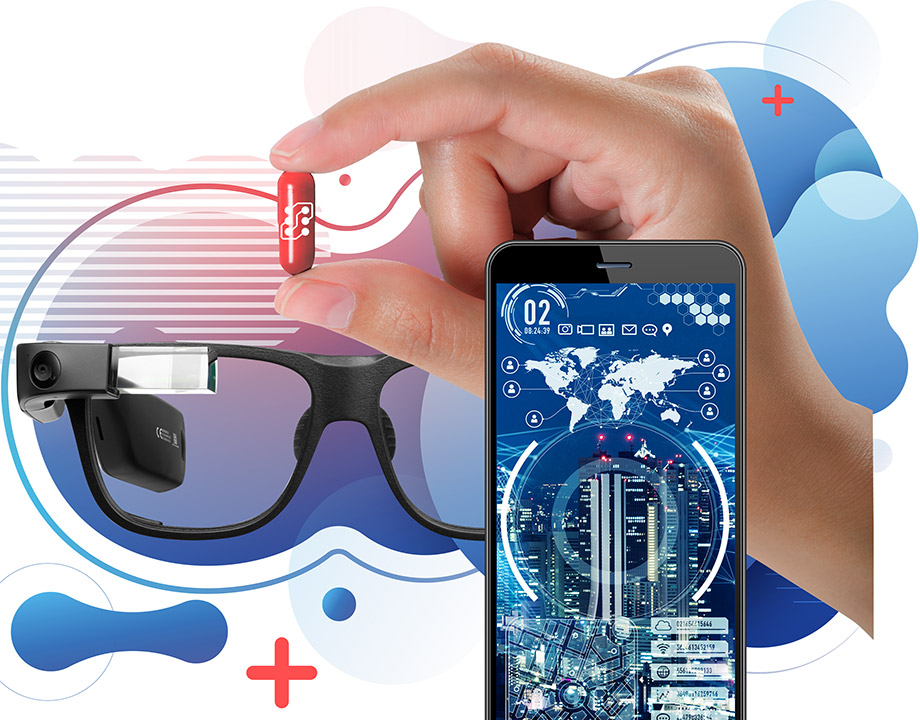10 Best IoT Examples in 2020
10 Best IoT Examples in 2020


This story was updated on 10/10/22.
The Internet of Things (IoT) is rapidly transforming how we do business and live our daily lives. Sensor technologies and real-time data acquisition and analysis can track almost any aspect of what we do. When used appropriately, IoT data gives us the ability to streamline business processes, maximize efficiency, better our health and safety, automate tasks, and empower us to take a deeper look at our relationships, systems, and environments.
Below are ten of the best examples of how IoT impacts our daily lives, both at work and at home.
1. Home Security
The Internet of Things is the key driver behind a completely smart and secure home. IoT connects a variety of sensors, alarms, cameras, lights, and microphones to provide nonstop security—all of which can be controlled from a smartphone.
For example, the Ring doorbell camera security system allows users to see, hear, and speak to visitors at their door via a computer, tablet, or mobile phone.
2. Activity Trackers
Sensor devices are designed to be worn during the day to monitor and transmit key health indicators in real time, such as fatigue, appetite, physical movement, oxygen levels, blood pressure, fall detection, and compliance with taking medicine.
At-home health monitoring reduces the number of emergency doctor or hospital visits and helps the elderly or people with disabilities to live more independent lives.
3. Digital Twins
In the manufacturing world, a digital twin is essentially an identical digital copy of a physical object. Using technologies including IoT, artificial intelligence, and machine learning, the digital twin can update itself as the physical object changes in response to its surrounding conditions.
Engineers can use the digital twin instead of the actual physical object to make adjustments or test updates.
4. Self-Healing Machines
Relying on arrays of sensors, artificial intelligence, and machine learning, manufacturing equipment can be designed to recognize variances in its own operation and correct them before they turn into bigger problems.
This saves companies time and money, freeing up employees who would normally monitor equipment and undertake maintenance to work on higher-level tasks.
5. AR Glasses
Google Glass is essentially a small, lightweight computer that is worn like a pair of eyeglasses for hands-free work. The information is presented within the “lenses” of the glasses, which can access a variety of Internet applications including Google Maps and Gmail. In industrial settings, workers often use them to pull up blueprints or product specifications.
The latest edition of these smart glasses allows workers to stream clear “point of view” video footage from expert assistants in other locations using Wi-Fi.
Further Reading: IoT 2020 Trends for Everyday Consumer Products
6. Ingestible Sensors
Ingestible electronic devices are roughly the size of a pill and outfitted with a power supply, microprocessor, controller, and sensors. They can be swallowed to monitor disease conditions, detect bleeding, and transmit data from within the gastrointestinal tract, such as the absorption of pharmaceuticals.
Abilify MyCite was the first pill with a digital tracking system approved by the U.S. Food and Drug Administration.
7. Smart Farming
Farming can be a very high-tech endeavor these days. An increasing number of farmers are using IoT-enabled tools to monitor weather, soil composition and moisture levels, crop health and growth, and livestock activity.
Drones can also be used to collect photos and atmospheric data, and this combination of data can be analyzed to determine the best time to harvest plants and create fertilizer profiles and schedules.
Further Reading: Seven Ways IoT Super-Charges Lean Manufacturing
8. Smart Contact Lenses
Considerable research is being done on developing smart contact lenses that can collect health information or treat specific eye conditions.
For example, the Swiss company Sensimed has developed a noninvasive smart contact lens called Triggerfish with a sensor embedded in a silicone contact lens that detects tiny fluctuations in an eye’s volume that could indicate glaucoma. The device transmits data wirelessly from the sensor to an adhesive antenna worn around the eye.
9. Industrial Security and Safety
Sensors and cameras can be used to monitor the perimeter of restricted areas and detect trespassers in non-authorized areas. They can also identify and fix small leaks of hazardous chemicals or pressure build-ups before they become serious problems, reducing corrosion and minimizing maintenance costs.
IoT-enabled detection systems are also used to monitor chemical factories, nuclear facilities, and mining operations.
10. Motion Detection
Using sensors to detect motion or vibration in large-scale structures such as buildings, bridges, and dams can help identify small disturbances and patterns that could lead to catastrophic failures.
Networks of detectors are also used in areas susceptible to landslides, avalanches, and earthquakes to support early warning systems.
Unlimited Possibilities
The Internet of Things is really just getting started. Years from now, we will be connected in ways that are still difficult to imagine from where we sit today. IoT applications—especially when combined with artificial intelligence and automation—will improve decision-making, efficiency, convenience, wellness, and energy conservation. The integration of these technologies will also enable creative thinking and innovative applications across a wide range of industries.
Further Reading: 5 Questions with ARM Vice President Charlene Marini
For example, researchers at the Morgridge Institute for Research at the University of Wisconsin-Madison are developing a smart toilet as a way to collect health samples.
"Because you make daily deposits of valuable health information, the idea is that when you urinate, if we could look at what’s in there, we could tell a lot about how you’re doing health-wise," said Chemistry Professor Josh Coon.
The toilet would pump out a urine sample for analysis of any number of data sets: alcohol consumption, caloric intake, medication metabolization, and more.
"Some people think we’re crazy," said Co-researcher and Data Scientist Ian Miller. "But I think we’re onto something."
Mark Crawford is a technology writer based in Corrales, N.M.







